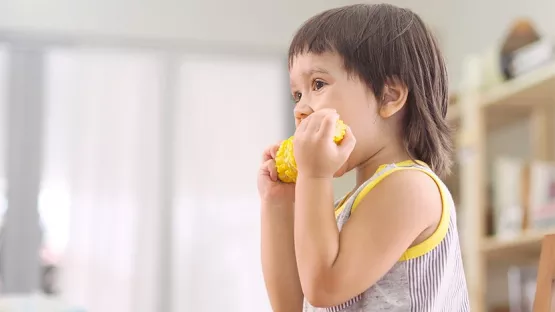
"Ingenious tips to nurture independence"
1. Let your child feed themselves
Children can start feeding themselves from the time you start them on solids. Letting your child ‘play’ with their food is actually a good way to introduce new foods to them. Naturally your child will make a mess as they learn how to feed themselves, and believe it or not, this is also good time for your child to learn about textures through sensory play. Just put a bib on them to keep their clothes clean and let them have fun while they feed themselves.
2. Let your child dress themselves
Planning a day out? It’s the perfect time to let your child pick out their whole outfit or decide what colour they want to wear. If you’re worried your child won’t pick clothes that are appropriate for the weather, you can give them a choice for each item of clothing, for example, they can choose which jacket they’d like to wear, or which pair of pants.
3. Let your child settle disputes themselves
It’s only natural that children will argue or fight over toys. The next time your child gets into an argument with their friends, don’t intervene straightaway. Try and let them resolve the dispute on their own, because they will not only learn to be more independent, but also reasoning, compromising and even important social skills.
4. Give your child space when they need it
When your child is feeling down, give them some space and time to work through their emotions. Although it can be difficult to see your child in distress, don’t try to cheer them up or distract them if they’re not ready for it. Let them work out their own emotions first, but let them them you’ll be there if they need you.
5. Let your child decide where to play
Give your child a space that is their own. It doesn’t have to be a large space, it could be the amount of space their playmat takes up. But that becomes their playing area. By doing so, they’ll learn to do things on their own and know that they can still be safe without your presence.
6. Let your child cry
When your child is feeling down or hurt, give them the chance to vent their emotions. Allow them to cry but don’t offer any verbal or physical comfort. When they’ve had a good cry, ask them what happened and why they are crying. That way, they’ll know you’ll be there for them even as they learn to sort out their emotions.
7. Let your child have their security blanket
If your child has developed an attachment to a soft toy or towel that they bring everywhere with them, there is no need for you to intervene. This object, also known as a transitional object, can help to comfort them when you are not around. Your child will eventually outgrow the habit when they eventually learn to be more independent without you around.
8. Let your child decide when to nap
Most parents or childcare centres will make children nap after lunch. If your child isn’t sleepy and moves about, don’t force them to stay in bed. Let them know instead that it is ‘quiet time’, and they can how they want to spend the time, as long as they don’t make noise and disturb others.
Related Articles
